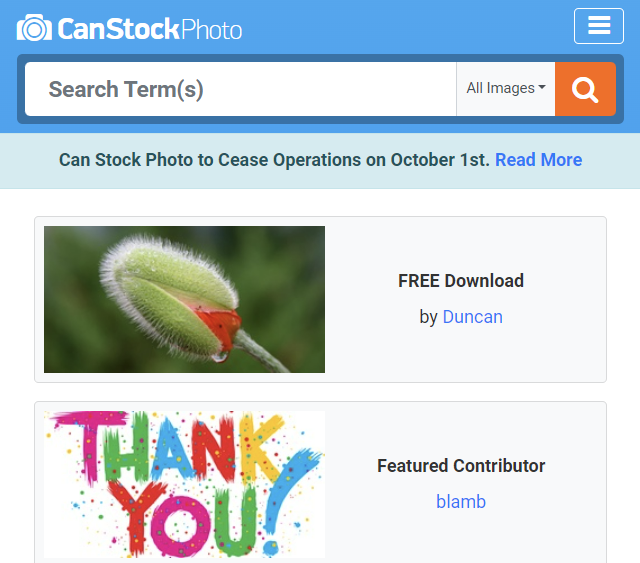
Although many microstock sites share much of the same images, each site has varying collections too. Each microstock’s site criteria for accepting images is not the same. Some sites standards for image quality are very high and your images won’t have a chance if they don’t pass their quality standards. Other sites are less demanding in terms of image quality and review images based mostly on aesthetics and marketability.
Do the Reviewers know what they’re doing?
Knowing what is likely to sell requires a knowledgeable reviewer, but reviewers can’t determine fully what images will do well and what won’t, they can only present the buyers with their educated guesses and hope that the buyers approve their decisions by downloading. As an image creator it can be very frustrating to have your images rejected by the reviewers of sites. You are already convinced that your images are worthy of going on the sites otherwise you would not have sent them. If you send your images to multiple sites and you find you are getting many rejections across the board, you have to question what is missing from your work, it could be several factors or just one. Start learning what it takes to consistently produce good stock images. Blaming the agencies or the reviewers is pointless, they have largely figured out what good stock images are, they see the sales of their entire collection unlike contributors who just see their own. Yes the reviewers don’t always get it right, yes it is annoying when you are convinced they have made the wrong decision, however unless your images are absolutely unique the sites are not losing out by declining your images as there are usually a ton of alternatives to any image.
What does it take to be a successful Microstock contributor?
Microstock is a business and to be successful you need to spend time not just mastering your art but learning about this business. You need to learn what stock images are used for and why certain composition styles work better for stock imagery. A beautifully composed image which you may be proud of or which may be highly acclaimed, doesn’t necessarily mean it has the makings to become a successful stock image. High earning microstock photographers are often not shooting what they enjoy shooting most or even how they prefer to shoot, they do their research and shoot what they know is in high demand and shoot in ways they know are appealing for stock buyers, they also stay up to date with new trends and change accordingly. Photography may have began as a passion but their stock photography is very much a business, they know that to earn a lot they need to keep producing a lot of images for submission to an ever increasingly crowded and competitive playing field, so they do their research, they improve their skills and produce more stock images of the highest standards.
Top 5 Rejection Reasons
The video above is a presentation of Shutterstock‘s top 5 rejection reasons, based on data from 2014. Below are also these rejection reasons (in reverse order) as well as some tips on how to avoid them.
- 5. Trademarks – The 5th most common rejection reason are for images containing visible brand names or logos. These images may be acceptable if submitted as Editorial but they can’t be used for commercial use in a site’s collection. Even keywords you use could be a reason for rejection, so don’t name specific brand names when describing images. Also don’t submit photos of isolated buildings or cars as these images will likely infringe on intellectual property rights. Buildings as part of skylines or a wider shot of several buildings are ok, or you could submit the shots for editorial usage only.
- 4. Excessive noise – This is the 4th most common rejection reason. Your images can be rejected also for containing compression artifacts, posterization as a result of excessive use of curves and levels with an image editing program. You should always inspect your images at full resolution, open them up in an editing program and take a look at them at 100%. If you see any imperfections there is a good chance the reviewers will see them too. Many microstockers prefer to shoot in RAW than JPEG. RAW is a file format that captures all image data recorded by the sensor when you take a photo. When shooting in JPEG image information is compressed and lost. With RAW however no information is compressed and you’re able to produce higher quality images, as well as correct problems in images that would be harder to correct or unrecoverable if shot in JPEG. Each agency has their own standards when it comes to noise, Shutterstock is probably overzealous for rejecting images with noise, far more intolerant of noise than probably the majority of buyers are. Shutterstock don’t take any chances however, so say for example if you are shooting with a low end DSLR camera with its kit lens and shooting in JPEG format, you are likely to have a tougher time in getting your images accepted.
- 3. Composition – Obviously this can be subjective, but if your images are consistently being rejected for composition you could console yourself with your friends and family and they will tell you what a great photographer you are and how mistaken the stock reviewers are, or you could take notice and learn some more. Don’t take rejection to heart, because there’s nothing to be gained from hurt feelings. Remember the microstock sites always want new images whether they are yours or other contributors, but they want marketable stock images which could be quite different to what you usually produce. Some tips. Be aware of the entire frame and make sure that distracting elements aren’t entering the frame, or clone these elements out in post production if you think it won’t take long. Be aware of the horizon line in your images and make sure it’s not crooked. Learn about the the Rule of Thirds and Leading Lines. The in camera grid can help you pay attention to the Rule of Thirds and to make sure the horizon is straight. Consider using negative space for balance and for buyers who want the space for their text. Ignore your friends when they question your judgment on extra space in your images. Don’t expect them to understand, just make sure you understand the benefits of negative space in stock images. Put yourself in the customers shoes and ask yourself what can the image be used for, microstoctock sites love images which can fit a wide range of uses.
- 2. Focus and camera shake issues – Images which are not in focus or have soft focus or are blurry due to camera shake is the second most common rejection reason. Experiment with different focus modes and learn the benefits of each one including manual focus, which is often a better option in situations where you are not rushed to get the shot. Also be aware that zoom lenses have a tendency to result in softer focus than prime lenses.
- 1. Exposure issues – This is the most common rejection reason, but unlike focus issues this issue can often be remedied in post production. Don’t ignore your camera’s internal light meter, even better to invest in an external light meter. Avoid shooting in midday light which is when the light is very harsh and tends to blow things out. Learn to interpret the histogram, which will give a clear indication of whether the image is underexposed or overexposed. The advantage of shooting in RAW format is that it is easier to optimise exposure and recover more blown highlights and clipped shadows in post production, without seeing a drastic reduction in image quality.
I hope you found this blog useful. If you have any insights of your own then please mention them in comments.


Useful article as always! Thank you
You are more than welcome. Thanks for reading. 🙂
The more knowledge a person has the likley that they will succeed